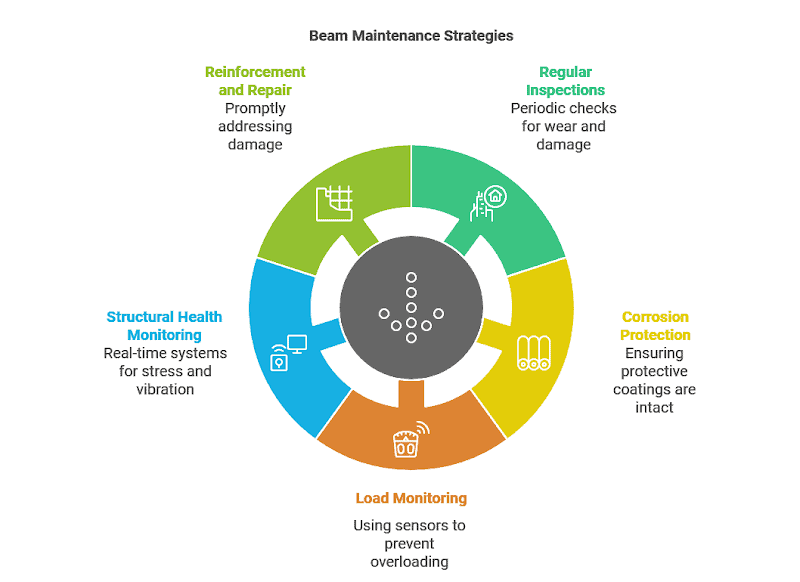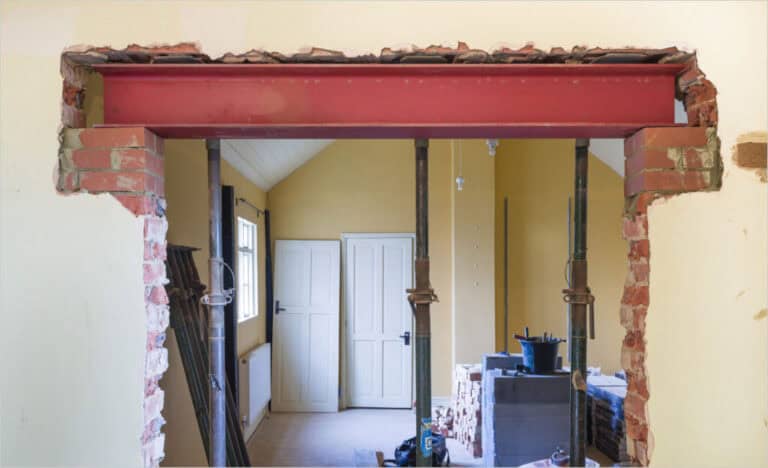Yes, a steel beam can absolutely span 20 meters, but whether it’s practical depends on several factors. Things like the type of beam, material properties, shape, the type of building, load conditions, and the overall structural design all play a part. It’s not a one-size-fits-all answer, but with the right materials and design, a 20-meter span can work well for your project, balancing both performance and cost.
Benefits of Using Large-Span Beams (Over 20m)
- More Design Freedom and Efficient Use of Space
Large-span beams create open, column-free floor plans, maximizing usable space. This gives you the flexibility to design spaces that suit various needs, whether for commercial or residential projects. - Stronger Structure and Better Load Distribution
These beams spread loads effectively, which reduces stress and boosts overall stability—especially important for larger buildings or industrial spaces. Plus, they handle seismic and wind forces better. - Cost and Time Savings
With fewer columns, foundations and support systems become simpler, saving both money and time during construction. Fewer but bigger beams also speed up the build process—so you can get your project done quicker. - Sustainability
Steel large-span beams are often made from recyclable materials, which helps cut down on construction waste. Plus, their energy-efficient designs make them a more sustainable choice.
5 Types of Large Span Beams and Features
Not all beams are suitable for large-span applications, and selecting the right type is essential for ensuring both strength and functionality in structures with spans over 20 meters.
Here are 5 types of beams suitable for large spans.
Composite Beams with Web Openings
Composite beams with web openings are designed with holes in the web to allow services such as electrical cables, water pipes, and HVAC systems to pass through the beam. This integration reduces floor depth while maintaining adequate load-bearing capacity, making it perfect for medium to large spans (usually 20-30m).
- Applications: Suitable for industrial buildings, large commercial structures, bridges, and projects where service integration and system accommodation are needed.
- Common Forms: Typically made using I-beams, H-beams, or composite beams, with special processing to create openings in the web, forming specific opening structures.
Cellular Beams
Cellular beams are beams with evenly spaced openings, usually round or elliptical, in the web. These beams reduce weight while maintaining strength, making them perfect for large spans (20m and beyond).
- Applications: Ideal for large industrial buildings, sports arenas, warehouses, and other large-span structures.
- Common Forms: Steel cellular beams, with perforated webs that create a honeycomb structure. The shape and size of the openings are customized based on the load-bearing requirements.
Prestressed Concrete Beams
Prestressed concrete beams are made by applying a pre-compressive force to the concrete before it is used in construction. This design enhances the beam’s ability to handle large spans and heavy loads, making it ideal for large, open structures.
- Applications: Often used in bridge construction, high-rise buildings, and highway projects that require large spans.
- Common Forms: T-beams, box beams, and other prestressed concrete forms that are designed for heavy load and large span applications.
Steel Truss Beams
Steel truss beams are a type of structural beam made up of a series of connected triangles that distribute loads efficiently. This design is especially useful for large spans, as it allows for lightweight, strong structures that can cover vast distances.
- Applications: Often used in large sports arenas, bridges, warehouses, and other structures that require long spans and high load capacity.
- Common Forms: Space trusses, flat trusses, and other configurations depending on the specific design requirements.
Hybrid Beams (Steel and Concrete Combinations)
Hybrid beams combine the strengths of both steel and concrete—steel for tensile strength and concrete for compressive strength. This makes them ideal for large spans where both strength and efficiency are essential.
- Applications: Ideal for large office buildings, bridges, and multi-story commercial structures where both span length and load-bearing capacity are important.
- Common Forms: Composite steel-concrete beams, often using a concrete deck with a steel core, designed for high-performance applications.
Key Considerations When Using Large Span Beams
Selecting the right beam for large spans means paying attention to some key technical details to keep your structure safe, efficient, and cost-effective.
Building Codes
Regional building codes are a must-follow. In the U.S., AISC guidelines govern steel beam design, while in Europe, Eurocode 3 sets the rules for steel structures, ensuring everything stays strong and secure.
Building Type
Not every beam works for every building. Steel beams are perfect for spans over 20 meters for industrial structures and those supporting cranes because they easily handle heavy, dynamic loads. Prestressed concrete beams are often the more budget-friendly choice for residential buildings, especially for spans up to 30 meters.
Structural Type
What’s the beam made of—steel or prestressed concrete? This choice affects load distribution and overall performance. Steel beams win for large spans because they’re lightweight and handle bending like pros. A good rule of thumb here is the “6-inch rule”: for every foot of span, the beam depth should be about 3/4 inches. For example, a 24-foot span needs a beam that’s at least 18 inches deep—simple but effective.
Beam Depth and Cost
Here’s something interesting: deeper beams are often more economical. A wide flange steel beam (like an I-beam) with more depth can carry heavier loads, which saves on material costs. So, sometimes bigger really is better—at least for your wallet.
Cantilever Design
For cantilever beams (the ones that stick out unsupported), length matters. The cantilever length shouldn’t exceed one-third of the total span to keep things safe and efficient. For instance, if your beam is 30 feet long, the cantilever part shouldn’t be more than 10 feet—it’s a small rule that avoids big headaches.
Size and Tolerances
Here’s a common misconception: “12 inches is always 12 inches.” Well, not quite! In steel design, actual dimensions—like those for HSS (Hollow Structural Sections)—can vary slightly. Always account for this when you’re calculating loads or fitting beams on site.
Aspect Ratio
The aspect ratio (beam length-to-height) can make or break your design. For steel beams over 20 meters, a high aspect ratio can lead to unwanted bending or deflection. Keeping the ratio balanced ensures stability and keeps your beam from sagging where it shouldn’t.
Maintenance and Monitoring of Large Span Beams
Regular maintenance and monitoring of large-span steel beams and structures are crucial to ensure their longevity and maintain structural integrity. Here are key considerations for their upkeep:

Our Large Span Steel Structures Solutions
Our Large-span steel structures buildings offer expansive, flexible spaces, which is a huge advantage for many industries. With our expertise, you not only get efficient space utilization but also guaranteed strength and safety. From design to construction, we offer comprehensive services to ensure timely delivery and exceptional quality. Whether it’s industrial plants, large commercial buildings, or bridges, our large-span steel solutions help you achieve greater design freedom, save costs, and reduce construction time. As technology evolves, we’ll continue offering innovative steel solutions to help your projects reach new standards and efficiency.
Related Reading: What Are The Long-Span Structures in Architecture?

